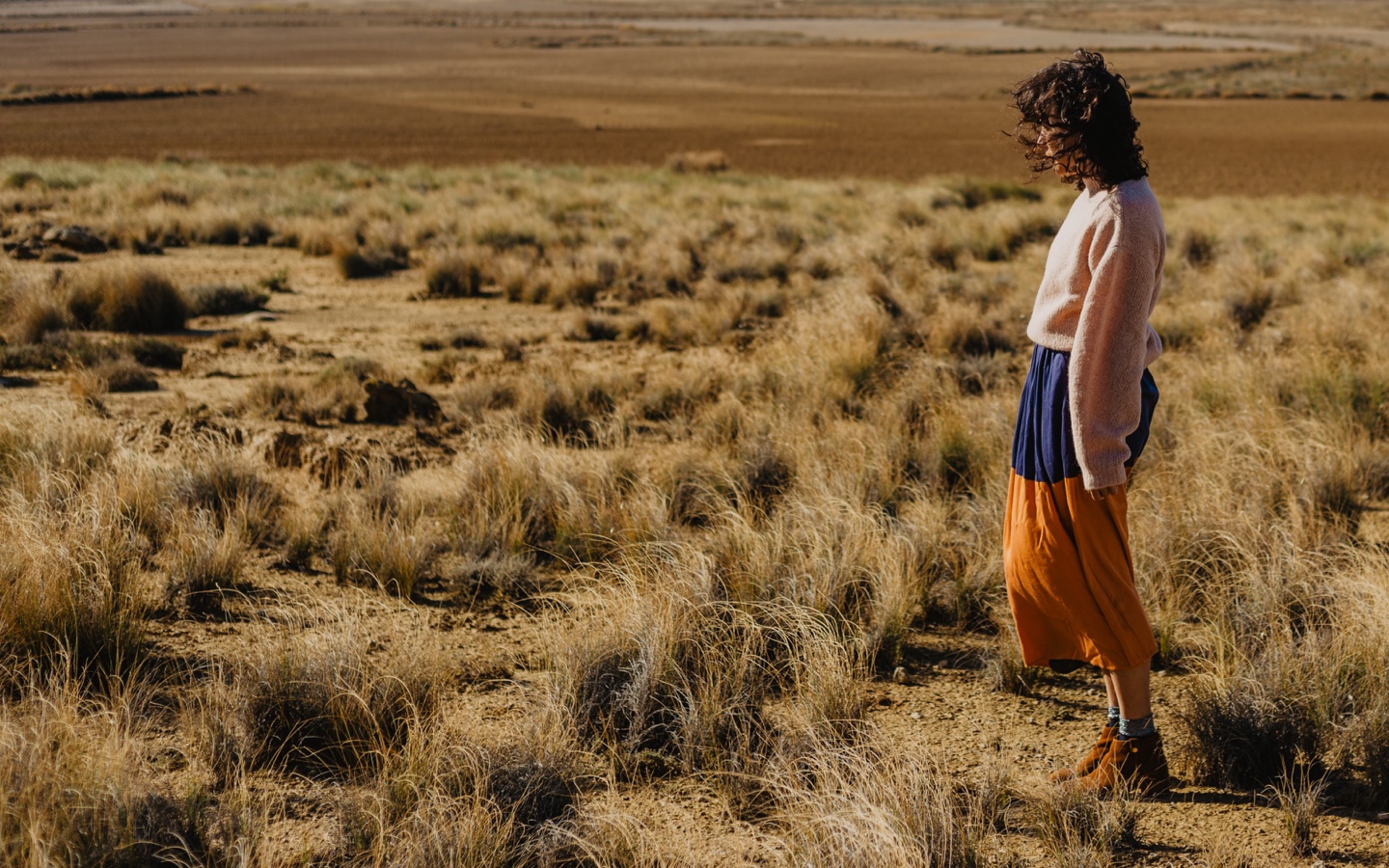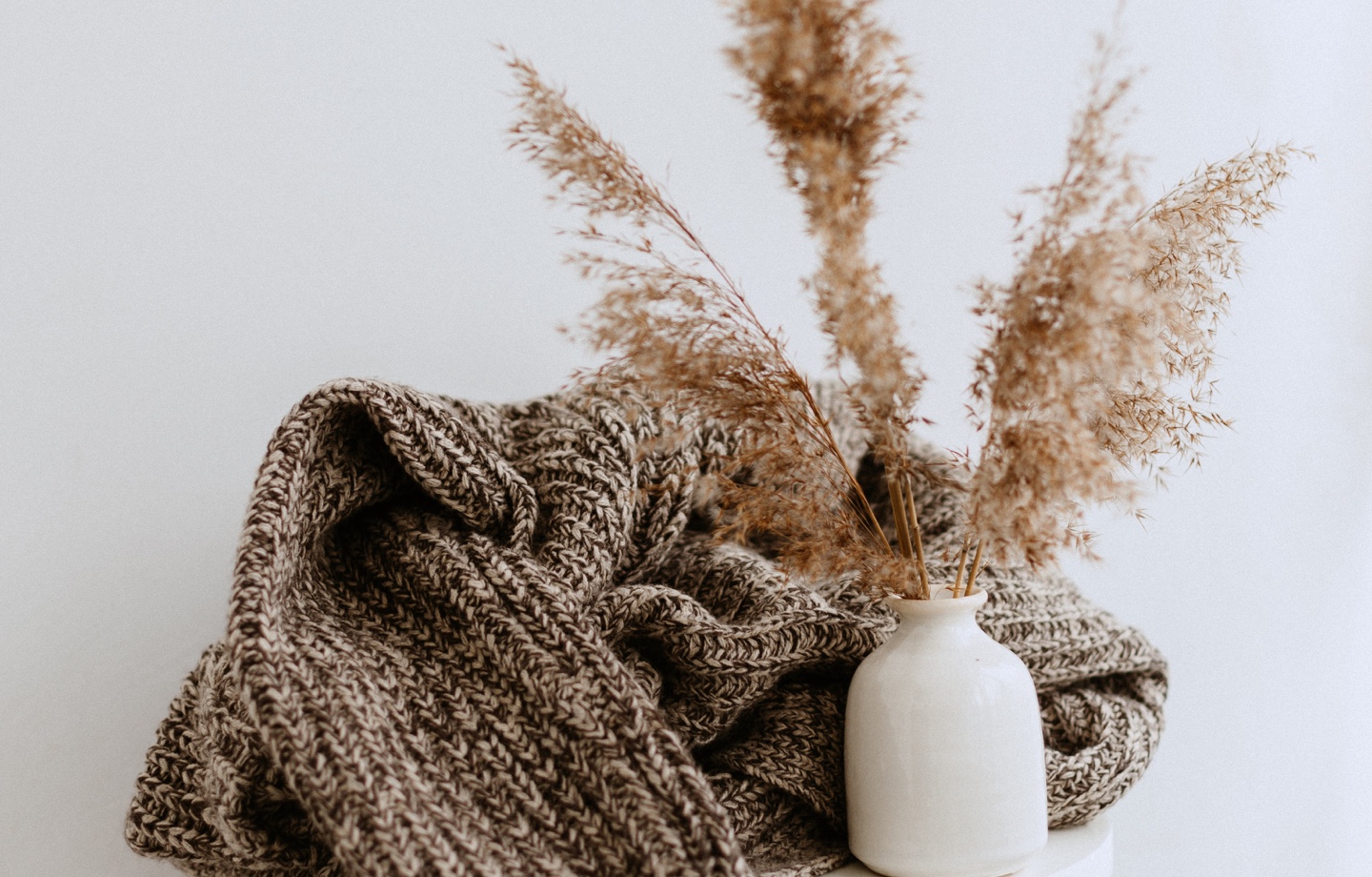Buying all-new all the time has major environmental consequences. Introducing no-new-anything spring.
With spring on the horizon, many of us are fantasizing about sandals, spring dresses, shorts, and the warm weather that comes with wardrobe transitions. It’s also a time when our inboxes and store shelves are flooded with just-launched clothing collections. The temptation to buy all-new everything is always strong, it’s especially tempting during seasonal shifts when we’re ready to refresh our style. But the environmental impact of all that newness is far less appealing.
The environmental impact of the garment, textile and fashion industries are often presented as a fast fashion problem: We’re purchasing too many wear-it-once products often produced in factories with substandard conditions that are intense on natural resources and produce crazy carbon emissions. However, the problems with the industry — and our own consumption — run much deeper than that.
Every aspect of the fashion supply chain impacts the environment, from toxic dyes to synthetic fabrics (polyester is one of the worst for the environment). And as the truth behind the industry continues to come to light, consumers are coming face to face with their own consumption habits.
A beneficial side effect of all this has bad news is the increase in popularity of secondhand shopping. Ten years ago, thrift shopping was still pretty niche. Now, everyone from luxury market influencers and celebrities to thrift-dedicated bloggers is showing off their finds. If you’ve got your eyes on something new for spring, why not work to lessen your carbon footprint and challenge yourself to a no-new-anything spring? Here are

Photo by Ellieelien on Unsplash
Shop Your Closet
Before setting off on your secondhand wardrobe journey, take stock of what you already have. If you pack your out-of-season clothes away, pull them out, steam out the wrinkles, and take an afternoon to try things on and see what you have to work with. If you’ve been craving something specific, like a linen top or new pair of shorts, be sure to see whether or not you already own that particular item, and if you do, ask yourself what it is about that item that makes you want to replace it. Is it the fit? Destressing or lack thereof? Stains? While some garments may truly need to be replaced, you may find that a simple patch job or DIY project could make an item feel new.
This is also a great time to collect garments to donate or bring in for recycling. Many businesses and recycling centers now offer garment recycling programs, like Girlfriend Collective, whose ReGirlfriend program allows customers to trade store credit for worn-out Girlfriend products. This grants you the opportunity to give items that may not be suitable for donation a second life. Because only about one percent of the world’s textiles are recycled, and because it can take old clothes thrown into landfills up to 200 years to decompose, it’s vital that we recycle or repurpose as many of our old worn-out clothes as possible.
And what of that favorite sweatshirt or pair of jeans that sadly have a hole in them? Mend them! A simple online search will turn up hundreds of mending techniques and ideas for fixing garments. Dealing with a broken zipper or a bigger mending project? Bring your clothes to a professional tailor to get them reworked or fixed. By placing value in the items you already own and investing in their care, you’re not only cutting back on landfill waste but decreasing your carbon footprint as well.
Plan A Clothing Swap
Before you drop those ‘to donate’ items in the bin at your local Goodwill or Salvation Army, why not plan a clothing swap among friends? While donating goods is a better option than simply throwing them away, there’s still a large percentage of donated items that end up in the landfill. Clothing swaps are a simple way to ensure your items find a new home and help you refresh your wardrobe at the same time. Gather a few pals, bring your items and lay them all out, and get swapping! Make a special day out of it with good snacks; cocktails, mocktails, or coffee; and a great playlist. After spending the cold winter months in hibernation, gathering with friends while you sip and swap is the perfect way to welcome a new season.

Photo by Yasmine Boheas on Unsplash
Become A Secondhand Superhero
Now that you know what you need and what you don’t, it’s time for the main event: Shopping. Before you hit the mall or power up your laptop, stop and think: Do you really need all those garments to be 100 percent brand-spanking-new? With the exception of undergarments and socks, the answer to that is probably not! That’s not to say you can’t use current styles as inspiration for thrifting and shopping secondhand — you may even be able to find those exact items on resale sites, like Poshmark, Depop,
For specific garments that you’d like to find used, saved searches on secondhand apps like those mentioned above are an excellent tool. That leopard printed slip skirt you’ve seen all over Instagram may not be available on Poshmark in your size right now, but with a saved search, or a few saved keywords, you could be among the first to know when someone does end up selling theirs.
Next up: Thrift and vintage shopping. Thrift shopping has seen a boom in the past several years, in part thanks to social media and influencers showing off the amazing items they’re scoring secondhand. This has helped spawn a whole new way to shop vintage and used: On Instagram itself. Even if you don’t live within range of any thrift stores, following accounts that post flash sales on the app can help you build an enviable wardrobe without buying new. Another online option? Sites like thredUP, the “largest online thrift store in the world,” which allows users to shop name brands at deeply, deeply discounted prices, and TheRealReal, an online destination for luxury consignment (less discounted, but a great option if you’re searching for last season’s “it bag”).
If You’re Going to Buy New, Buy Organic
Polyester is a byproduct of crude oil. Do you really want that on your body? If you have to shop new, buying materials with organic certifications can go a long way to decreasing the environmental impact of the garment and massively reducing the amount of water needed to process the material. Conventional cotton is also a polluted crop. Responsibly and sustainably grown cotton doesn’t use pesticides, herbicides, and fertilizers. This is better for you as well as the farmers harvesting the cotton. Best of all, organic cotton delivers a luxurious finish, breathes easily, and wicks away moisture better than any synthetic fiber.
Some of our favorite sustainable brands include: MATE the Label for comfy loungewear, Outland for eco-friendly denim, Reformation for when we’re feeling fancy, and Ecocalf for all things outerwear. And if you want to dive deep to support brands that are good to our planet, people, and animals, check out Good On You and The Good Trade for the ethical brands that you can trust.
Do you have tips for thrift, secondhand and vintage shopping? Share with our community on social by tagging @AvocadoMattress and #AvocadoGreenMagazine

Shop Pillows
The Essential Organic Pillow Collection
Gentle, breathable, non-toxic support.






